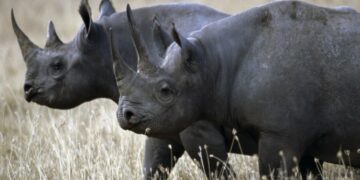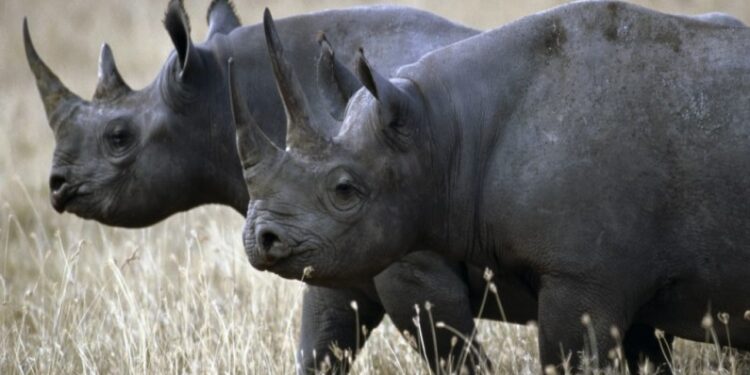By John Ikani
Etosha National Park, renowned for its thriving population of black rhinos, has been grappling with an alarming surge in rhino poaching this year.
Shockingly, at least six rhinos have already fallen victim to this illegal activity since the start of the year.
Responding swiftly, Namibia’s Ministry of Environment, Forestry, and Tourism has launched an ambitious annual dehorning campaign.
The campaign aims to remove the horns of 600 rhinos within the next 12 months.
The black rhino, an extremely endangered species, is relentlessly targeted for its horns due to the perceived mystical, ornamental, and medicinal value they hold in Asian markets.
During the launch of the annual dehorning campaign, Minister of Environment and Tourism, Pohamba Shifeta, emphasized the rationale behind the initiative.
According to Shifeta, dehorning rhinos significantly reduces their desirability and serves as a strong deterrent to potential poachers.
“We aim to dehorn a majority of the rhinos to enhance their safety and minimize instances of natural fatalities, particularly among the fierce black rhinos known for their aggressive tendencies during fights,” Shifeta explained.
Joining the efforts to combat poaching, Namibia has assembled the Blue Rhino Task Force, comprising military personnel, police officers, park wardens, and intelligence officials.
Naftal Lungameni Sakaria, the recently appointed Namibia Regional Police Commander and member of the task force, acknowledged the persisting threat posed by poachers to the country’s conservation endeavours.
Sakaria highlighted the strategic importance of Etosha National Park, which draws tourists from across the globe, as visitors are eager for a chance to witness the magnificent rhinos in their natural habitat.
While dehorning has proven effective in deterring poaching, it also has potential implications for the survival of rhinos in the wild, as explained by veterinarian Dr. Conrad Brain.
Dr. Brain referred to a collaborative research project between Namibia and an American university, which highlighted the negative impact of dehorning on the ability of mother rhinos to protect their offspring from predators, as their horns serve as a defense mechanism.
Despite the significant findings of the research project, advocates of dehorning argue that the advantages outweigh the drawbacks.
The dehorning program, in operation since 2014, will continue for the next 12 months, targeting 600 rhinos for the procedure.
As part of the process, the rhino horns undergo meticulous DNA profiling, marking, and storage in the national stockpile. The exact value of Namibia’s rhino horn stockpile remains undisclosed to ensure security.
It is important to note that trade in rhino horns is globally prohibited under the Convention on International Trade in Endangered Species (CITES).
However, Namibia’s efforts to lift the ban on trade of white rhino horns, with the aim of generating funds for conservation initiatives, were met with rejection during the CITES meeting held in Panama last year.



































